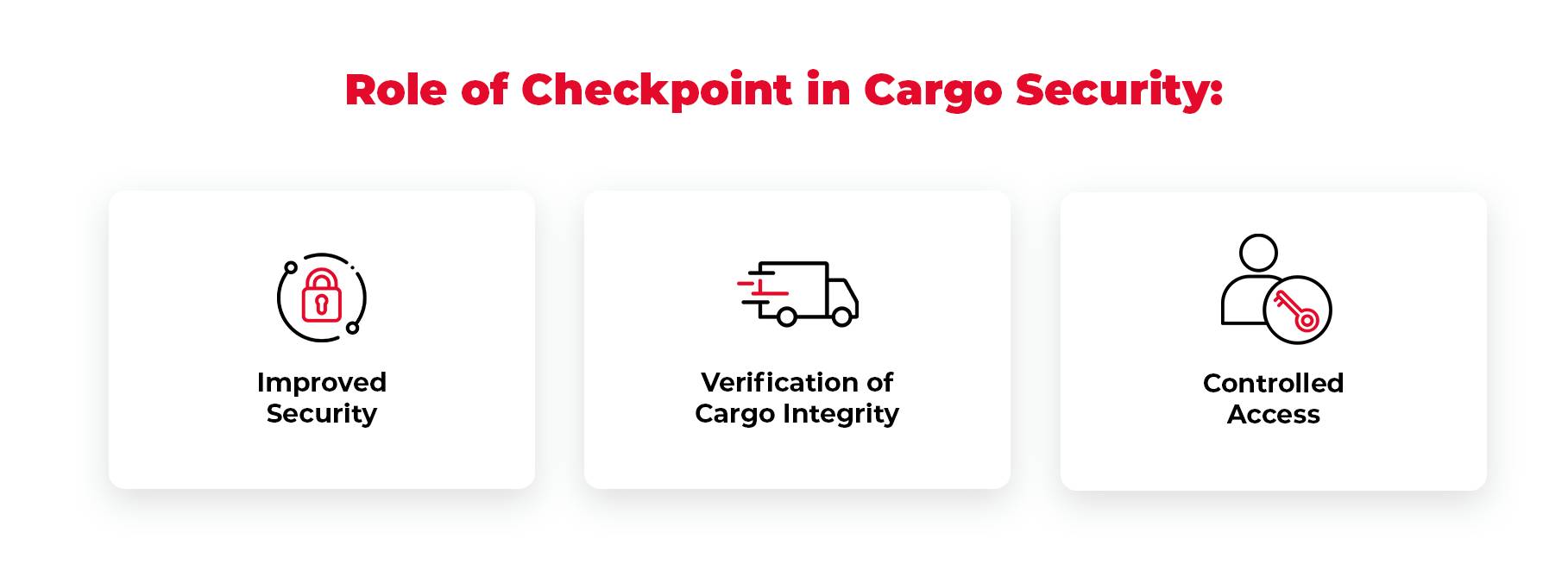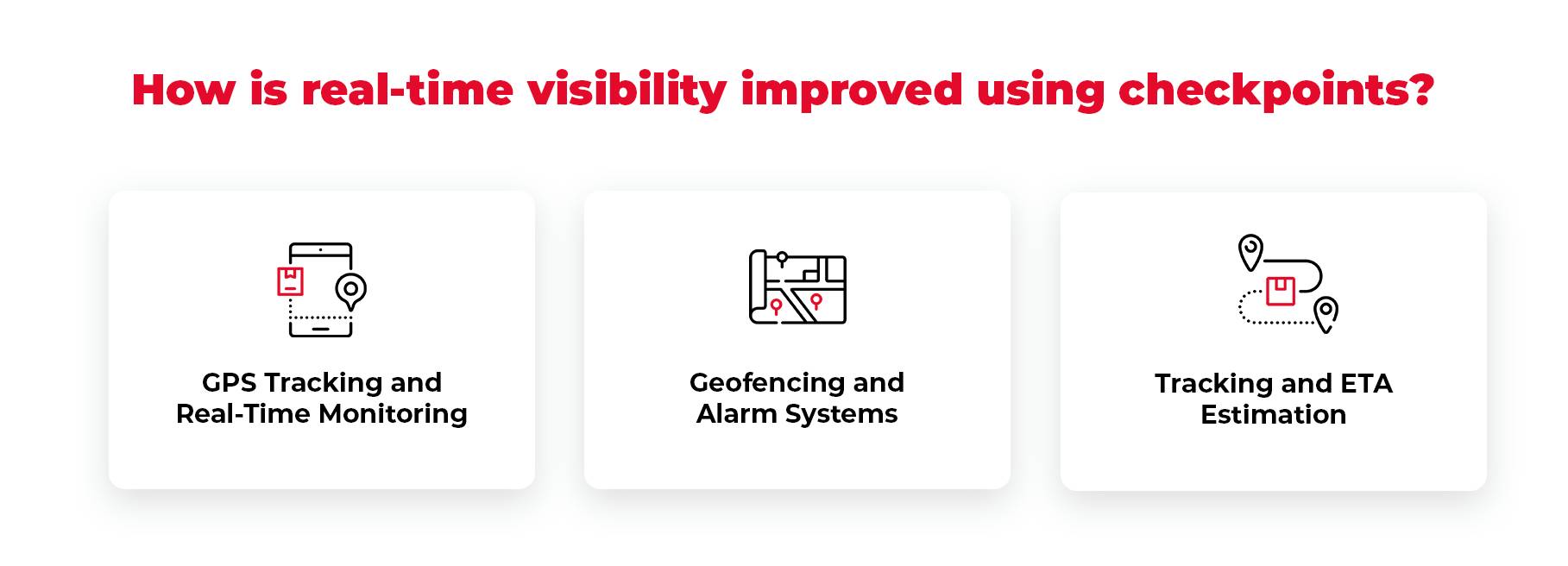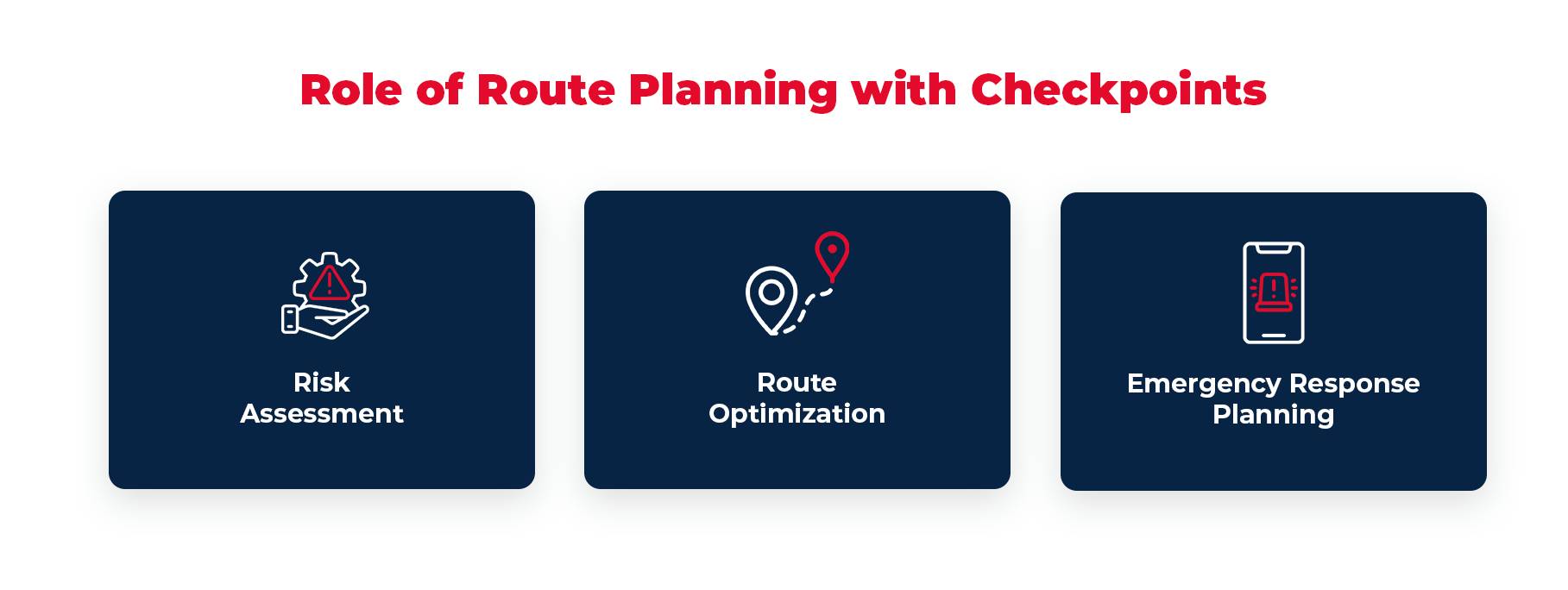
Power of Checkpoints: Enhanced Real-time Visibility, Better Fleet Tracking, Route Planning, and Cargo Security
In the world of logistics and supply chain management, the secure transport of high-value cargo is of paramount importance. Operations managers responsible for the safe and planned movement of valuable goods across miles of challenging terrain face numerous challenges in safeguarding their shipments. However, with the right strategies and tools in place, these challenges can be mitigated. This blog will explore the significance of incorporating checkpoints in route planning, resulting in seamless real-time visibility, fleet tracking, and reduced risk of cargo theft.
The Need for High-Value Cargo Security
High-value cargo encompasses a wide range of goods, from electronics and pharmaceuticals to precious metals and cash. Protecting these valuable assets is not only a financial imperative but also a moral responsibility. Theft, damage, or loss of high-value cargo can lead to significant financial losses, damage to a company’s reputation, and even legal implications. This is where checkpoints in delivery management software with route planning, real-time visibility, and fleet tracking come into play.
Did you know? Food and beverage products are the top targets for freight theft in 2023, with an average loss of $214,000. – CNBC
Role of Checkpoint in Cargo Security

Improved Security:
Checkpoints can serve as a critical security hotspots along the transportation route. These strategic locations can be equipped with security features to deter potential threats.
Verification of Cargo Integrity:
At checkpoints, cargo can be inspected (inscan and outscan) to ensure it remains intact and unaltered during transit. Inspections may involve checking seals, and serial/ AWB numbers, thus maintaining the cargo’s integrity.
Controlled Access:
By establishing checkpoints with controlled access, only authorized personnel can enter and exit these areas. This controlled environment significantly reduces the risk of unauthorized individuals gaining access to the cargo.
How is real-time visibility improved using checkpoints?

GPS Tracking and Real-Time Monitoring:
Modern technology enables real-time tracking of high-value cargo using GPS devices. Checkpoints can receive and transmit this tracking data, ensuring the cargo remains on the intended route and identifying any deviations or suspicious activity.
Geofencing and Alarm Systems:
Geofencing technology can be implemented at checkpoints to trigger alarms or notifications if the cargo strays from the planned route or if there are unexpected stops or delays. This enhances control over the driver’s route and helps in enforcing compliance with planned itineraries. Additionally, the system can trigger alerts to notify dispatchers and relevant stakeholders.
Tracking and ETA Estimation:
Checkpoints, when combined with real-time tracking technology, enable dispatchers to provide accurate estimated time of arrival (ETA) to customers. This enhances customer satisfaction by keeping them informed about the status of their deliveries.
How is fleet tracking improved using checkpoints?
![]()
Optimizing Route Planning:
Fleet tracking systems help in route optimization, reducing exposure to high-risk areas and improving overall security during the journey. By continuously monitoring vehicle locations, operations managers can make real-time decisions to avoid potential threats or traffic delays.
Preventing Unauthorized Stops:
Fleet tracking systems provide insights into vehicle movements, allowing managers to identify unauthorized stops or deviations from the planned route. This level of scrutiny ensures cargo remains secure throughout the journey.
Asset Management:
Fleet tracking extends beyond security, offering valuable insights into asset management. It helps operations managers optimize vehicle use, reduce fuel consumption, and improve overall efficiency while safeguarding high-value cargo.
Role of Route Planning with Checkpoints

Risk Assessment:
Checkpoints can serve as locations for periodic risk assessments, where the security team evaluates the situation and adapts security measures accordingly. This proactive approach helps in identifying potential risks before they materialize.
Route Optimization:
A well-planned route can make a significant difference in cargo security. Operations managers should consider factors such as road conditions, traffic patterns, and the security of the areas through which the cargo will pass. By strategically planning routes, managers can minimize the risk of theft.
Emergency Response Planning:
Checkpoints can be equipped with emergency response plans in case of theft or security breaches. This ensures a rapid and coordinated response to mitigate risks and recover the stolen cargo.
How can checkpoints improve driver compliance?

Strategic Planning:
Checkpoints assist in strategically planning routes, considering driver working hours, rest breaks, and regulatory restrictions. By incorporating checkpoints, dispatchers can optimize routes to ensure that drivers adhere to mandated rest periods and avoid exceeding their allowed driving hours.
Scheduling Breaks:
Checkpoints can be designated as locations for scheduled breaks. Dispatchers can use them to plan rest stops or overnight stays, ensuring that drivers comply with regulations governing maximum consecutive driving hours.
Electronic Logging Devices (ELDs):
Checkpoints, when integrated with ELDs, provide automated and accurate recording of driver hours. This ensures compliance with regulations such as the Hours of Service (HOS) rules, preventing violations and associated penalties.
Documentation and Reporting:
Checkpoints serve as points for collecting necessary documentation, including proof of delivery and compliance records. This documentation not only helps in monitoring driver compliance but also facilitates reporting for regulatory purposes.
Implement Checkpoints in the Delivery Management System
In the world of high-value cargo transportation, the integration of checkpoints, real-time visibility, fleet tracking, and route planning is paramount for reducing the risk of theft. This is when LogiNext comes into the picture. We assist operations managers in handling and transporting high-value cargo and can take proactive steps to protect their assets by implementing a comprehensive security strategy. By doing so, they not only safeguard the financial interests of their organizations but also uphold their commitment to ethical and responsible business practices. Learn more by clicking the red button below!
60







@LogiNext